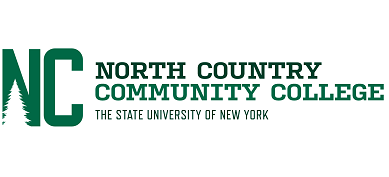Heading
Loans
Loans are one of the three major types of student aid. Unlike grants and scholarships
that do not have to be repaid, loans are a form of aid that must be repaid. Repayment
typically starts 6 months after graduation, or when the student's attendance drops
below half-time. When reviewing loan options, we suggest you always take advantage
of federal loans first.
Federal Direct Student Loans
Subsidized
- Amount based on financial need
- Must meet all eligibility requirements
- Federal government pays the interest while student is in school at least half time
Unsubsidized
- Interest accrues while student is attending college
- Amount not based on financial need
- Like the subsidized loan, must meet eligibility requirements
Student loans are not unlimited; the following are the aggregate undergraduate student
loan limits:
Dependent student - $31,000 (up to $23,000 may be subsidized)
Independent students and students whose parents are unable to borrow the Direct Parent
PLUS Loans - $57,500 (up to $23,000 may be subsidized)
Interest Rates for Federal Direct Student Loans
The interest rate varies depending on the loan type and the first disbursement date
of the loan. The table below provides interest rates first disbursed on or after
July 1, 2020 and before July 1, 2021.
Undergraduate Borrowers -- Direct Subsidized and Unsubsidized Loans -- 2.75%
Graduate or Professional Borrowers -- Direct Unsubsidized Loans -- 4.30%
Parent and Graduate Borrowers -- Direct PLUS Loans -- 5.30%
Graduate or Professional Borrowers -- Direct Unsubsidized Loans -- 4.30%
Parent and Graduate Borrowers -- Direct PLUS Loans -- 5.30%
Loan Fees
Most federal student loans have loan fees that are a percentage of the total loans
amount. The loan fee is deducted proportionately from each loan disbursement. This
means the money you receive will be less than the amount you actually borrow. The
information below shows the loan fees first disbursed on or after October 1, 2019.
Direct Subsidized and Unsubsidized Loans
First Disbursement Date -- On or after 10/1/20 and before 10/1/21 -- Loan Fee - 1.057%
First Disbursement Date -- On or after 10/1/19 and before 10/1/20 -- Loan Fee - 1.059%
First Disbursement Date -- On or after 10/1/19 and before 10/1/20 -- Loan Fee - 1.059%
Direct PLUS Loans
First Disbursement Date -- On or after 10/1/20 and before 10/1/21 -- Loan Fee - 4.228%
First Disbursement Date -- On or after 10/1/19 and before 10/1/20 -- Loan Fee - 4.236%
First Disbursement Date -- On or after 10/1/19 and before 10/1/20 -- Loan Fee - 4.236%
Additional information online at https://studentaid.gov/understand-aid/types/loans/interest-rates
Direct Subsidized Loan Time Limitation
Students who receive their first federal student loan after June 30, 2013 will have
a limit on the maximum period of time that Direct Subsidized Loans can be received.
Students that fall into this category cannot receive Direct Subsidized Loans for more
than 150% of the published length of the program.
For example, the maximum period for which you can receive Direct Subsidized Loans
if you are enrolled in a 2-year associate degree program is 3 years (150% of 2 years
= 3 years).
Federal Direct Parent PLUS Loans
The Federal Direct Parent Loan for Undergraduate Students (PLUS) is a loan in the
parent's name to assist their dependent student with educational expenses. Credit
approval is required. These loans are guaranteed and regulated by the Federal Department
of Education.
Alternative Loans/Other Loan Sources
Alternative loans are private loans (available through various lenders) to assist
with the cost of education. These loans are not federally guaranteed student loans
and are generally based on income and credit history. Most students will be required
to have a cosigner. Individuals may only apply for up to the cost of attendance minus
any financial aid received.
NCCC does not recommend or prefer any one private alternative loan product. Please
carefully review and compare the borrower benefits, loan fees, interest rates, and
repayment terms. This information should be available on the web site at www.elmresources.com
Cohort Default Rate
In September 2018, the US Department of Education released official cohort default
rates for federal student loan borrowers who went into repayment in 2015.
- North Country Community College’s Default Rate is 17%
- The National Cohort Default rate is 10.8%
NCCC is committed to working with our borrowers to educate them on the choices of
borrowing. Our default rate has been steadily declining over the last several years.
National Student Loan Data System (NSLDS)
NSLDS is a centralized national database that stores information on Federal Student
Loans and grants. You can access NSLDS using your FSA ID online at https://nsldsfap.ed.gov/login You can view how much you have borrowed in student loans, the schools you attended
while borrowing, interest rates, current loan status, subsidized loan usage and loan
servicer information.
Master Promissory Note
The MPN is a legal document that explains the terms and conditions of your loan(s).
When signing the MPN you are promising to repay your loan(s) and any accrued interest
and fees. The MPN must be completed to take out a Direct Loan and can be completed
online at www.studentaid.ed.gov
Entrance Counseling
If you have not previously received a student loan, you must complete Entrance Counseling
before the school can disburse your loan. The counseling will help you to understand
your responsibilities as a student loan borrow. Complete online at www.studentaid.ed.gov
Exit Counseling
Direct Student Loan borrowers are required to complete exit counseling when graduating,
withdrawing, or dropping below half-time (6 credit hours). Exit counseling is required
by law and provides students with important information as they prepare to repay their
federal student loans. Complete online at www.studentaid.ed.gov
